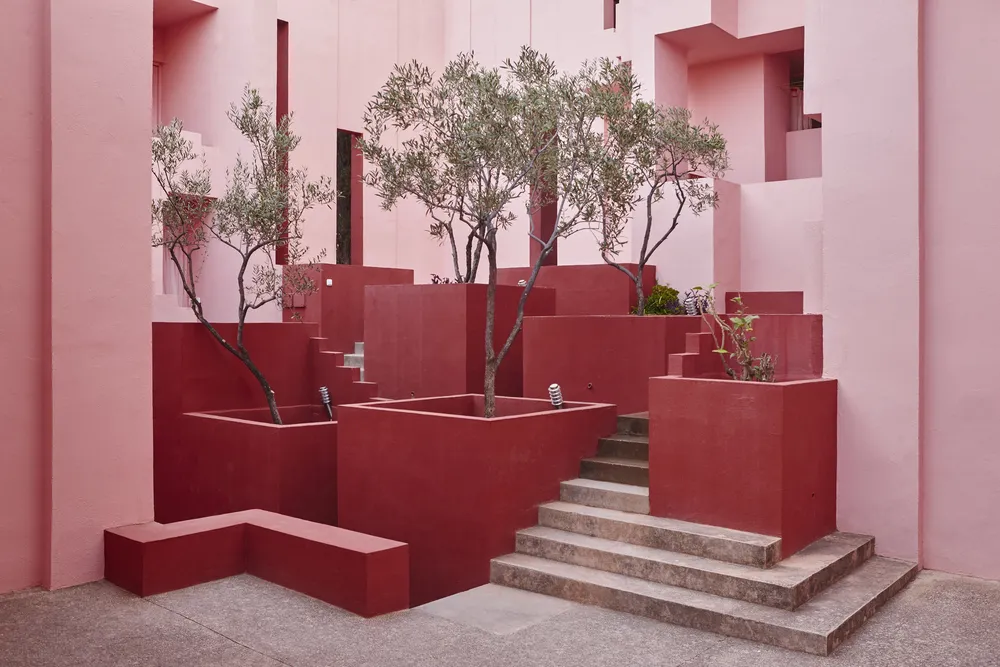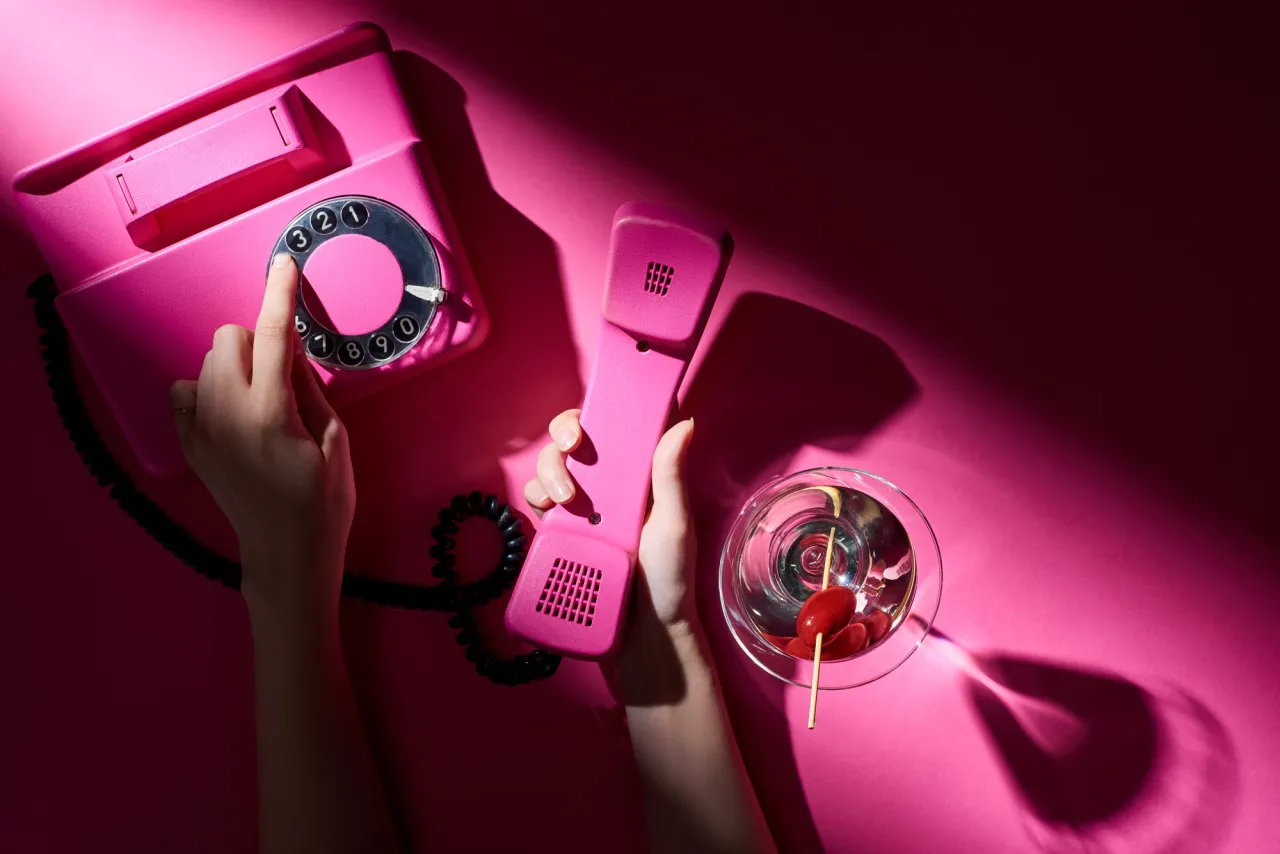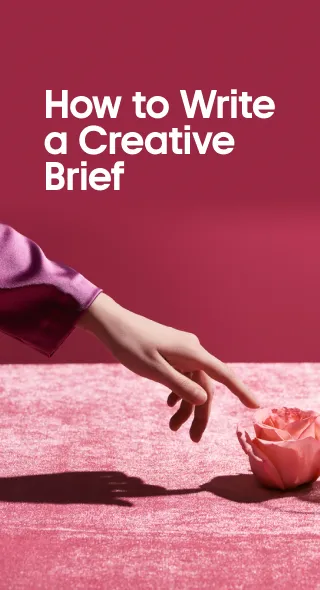How to Write a Creative Brief: Key Elements, Examples, and a Ready-to-Use Template
Creativity thrives when you give it direction. And in the world of marketing, this direction often comes in the form of a creative brief. It serves as a compass for projects, ensuring that everyone involved is on the same page and the creative process remains tied to business objectives and audience needs.
However, writing a creative brief can be a challenging task. It requires strategic thinking, a deep understanding of the brand, and a connection with the audience. This article will make the process of crafting a compelling creative brief clear and understandable. Dive in to learn about the key components of a creative brief, the process of writing one, and common pitfalls to avoid. Find the best creative brief examples and a free template!
What is a creative brief?
A creative brief is a strategic document that outlines and guides the development of a marketing, design, or advertising project. It serves as a roadmap, defining a project’s goals, target audience, messaging, and expected outcomes. It’s crucial in ensuring that all stakeholders, including clients, marketing teams, and other creatives involved share the same vision of the project.
A creative brief typically includes:
- Project overview: an outline of the product that is the focus of the campaign.
- Objectives: what the project aims to achieve.
- Target audience: a detailed profile of the intended audience for the project.
- Unique selling proposition: a statement that differentiates your product or service from its competitors.
- Tone and message: the key message to be communicated and the tone of voice to be used.
- Outcomes: a list of expected outputs from the project, such as print ads, social media posts, video content, etc.
- Budget and timeline: detailed project schedule and budget constraints.
- Competitive landscape: information about competing products or brands and their strategies.
- Success metrics: KPIs that are used to evaluate the effectiveness of a project.
- References and inspirations: materials that help communicate the desired look, feel, or concept of the project.
What is the purpose of a creative brief?
Establishes understanding. It provides a shared understanding and ensures all stakeholders — including clients, strategists, creatives, and project managers — are on the same page and understand the project’s goals, audience, and desired outcomes. A creative brief eliminates ambiguity and reduces the risk of miscommunication by outlining essential project details.
- Provides direction. A brief gives creative teams clear direction on what is expected. This helps them generate ideas and solutions that align with the project objectives.
- Saves time and resources. By defining project expectations at the start, you avoid unnecessary revisions or changes in the middle of the project, saving time and resources.
- Helps with project evaluation. A brief outlines project goals, making it easier to evaluate the success of the project after completion.
- Streamlines communication. A well-written brief can answer most questions a creative team may have about the project, leading to more efficient communication.
What makes a good creative brief: 10 elements of a creative brief
1. Project overview.
A project overview sets the stage for the entire creative project. It includes a brief summary of the project, its background and context, the work to be done, and expected outcomes. It provides a snapshot of the project that helps everyone involved understand its scope and purpose, giving the team a general understanding of what the project is about.
2. Objectives.
Clearly defined objectives are the heart of a good creative brief. They articulate what a project aims to achieve. These should align with broader business or marketing objectives. They should be specific, measurable, achievable, relevant, and time-bound (SMART) to help keep the project on track and make it easier to measure success. In this context, it’s important to differentiate between goals and objectives. Goals are general guidelines that explain what you want to achieve, while objectives are precise, measurable steps that you take to reach these goals.
3. Target audience.
The target audience section provides a detailed profile of who the project is designed to reach. This should go beyond basic demographics like age, gender, and location. It’s better to include psychographics, such as interests, behaviors, lifestyle, attitudes, and values. The more you understand your audience, the more effectively you can communicate with them. A deep understanding of target audience helps ensure that the project’s outputs will resonate with those whose attention you need the most.
4. Unique selling proposition.
A unique selling proposition is a statement that differentiates your product or service from its competitors. It highlights what makes your brand unique and why it suits your target audience. Craft a unique selling proposition that’s concise and truly distinctive to your brand. Reflect on what makes your brand stand out — it could be anything from a unique product feature or outstanding customer service to an innovative business model.
5. Tone and message.
Tone is the personality and emotion used in your brand’s communication. The message is the key takeaway you want your audience to understand and remember. The tone and message should align with your brand identity and the objectives of the creative project. Describe the tone with adjectives, for example, “professional,” “funny,” or “inspirational”. For the message, focus on what you want your audience to think, feel, or do after they see your project. Make sure the tone and message are consistent across all project platforms to create a cohesive brand experience.
6. Outcomes.
Outcomes are the tangible results of a project: website design, advertising campaign, video production, etc. They should go into detail about what will be delivered, in what format, and when. This means you need to be as specific as possible about expected results. This includes specifying quantities, formats, sizes, and any other relevant information. For example, instead of asking for “social media content”, you should request “10 Facebook posts, 5 Instagram Stories, and an article on LinkedIn.”
7. Budget and timeline.
Budget outlines the financial resources needed for a project. It includes costs for creative work, production, and any other expenses that might arise during the project. Providing a clear budget helps the creative team tailor their solutions according to financial limitations. Be as transparent and precise as you can. If there are aspects of the budget that are flexible, make that clear in the brief.
Timeline specifies the start date, key milestones, and the deadline for the project. It’s also important to consider enough time for brainstorming, creation, feedback, revisions, and production. Always look to provide a realistic timeline that takes potential obstacles or delays into account. A timeline that’s too tight may hinder the creative process and result in average work. It’s essential to outline financial constraints and timeframe, as they allow you to plan your work effectively and set realistic expectations.
8. Competitive landscape.
The competitive landscape section should detail key players in your market, their strengths and weaknesses, and how they are perceived in the marketplace. Understanding your competition can help position your brand and highlight what sets your offering apart. This means you shouldn’t just list your competitors, but also analyze them. What do they do well? Where do they fail to provide? How do they communicate with their audience? How can you differentiate your brand from theirs? This analysis will inform your unique selling proposition and help your project stand out.
9. Success metrics.
Success metrics, or KPIs, are used to evaluate the effectiveness of a project compared to its objectives. They provide quantifiable measurements that can help you determine whether your project was successful. This could include measures such as number of new leads generated, increased website traffic, social media engagement, or conversion rates.
Be sure to define these metrics in accordance with your project’s objectives. For instance, if the goal of your project is to increase brand awareness, a relevant KPI might be an increase in website traffic or social media followers. It’s important to measure what matters — focus on metrics that directly relate to your project’s success.
10. References and inspirations.
References and inspirations are materials that help communicate the desired look, feel, or concept of the project. They can include images, videos, articles, designs, or mood boards. Providing visual references can help a creative team better understand the vision. That’s why you should be selective and purposeful with your references. You should explain why you chose each reference and what you like specifically. But remember, they are just for inspiration and a team should bring their own ideas to the project instead of copying the references.
What does a creative brief look like? Check out this example and use it as a template!
Project overview
[Project name] fulfills our commitment to __________ [company mission/vision/purpose]. Conceived as a solution to ___________ [problem or opportunity], the project will employ ________ [strategy or approach] to deliver _________ [desired outcome]. By leveraging our distinctive strengths in ________ [company’s key competencies], we envision this project to accelerate growth in _________ [specific sector or area], while also moving us closer to our overarching organizational goals. A successful outcome will be realized in the form of _________ [project’s expected results].
Project objectives
Our foremost objective is to provide solutions for problems related to ___________, enhancing the overall experience of our __________ [product/service]. We endeavor to expand our presence in the ________ [market/area of expertise], while also enhancing our existing _____________ [product/service/feature]. Through this project, we intend to stimulate greater engagement and interaction from our target audience, particularly on platforms such as ________, ________, and ________. By achieving these objectives, we anticipate that ________ [project name] will add substantial value to our customers and our brand, cementing our position in the ________ [industry/market].
Target Audience
Our target audience is primarily ____ [gender] individuals within the age of _ to _. They predominantly reside in areas such as ____, _____, and ______. Their interests include ____, while they exhibit a general dislike for ______. They are likely to be working in sectors like _____, _____, and _____. The problems they often encounter include ________, and they express a need for more ________ in their life. Their favorite products are _______, which they often learn about through channels like ________.
Unique selling proposition
Our unique selling proposition lies in our ability to _________ [unique solution], directly addressing our target audience’s pain point of ________. By offering _______ [unique feature], we provide a distinctive solution that not only alleviates their problem, but establishes a strong competitive advantage for our brand.
Tone and message
The tone of the ______ [project name] will be ______ [describe the tone, e.g., friendly, professional, casual, etc.]. This tone will guide the style of all our communications related to the project, ensuring consistency and alignment with our brand voice. The key message we aim to convey is that _______ [describe the main message, e.g., our product addresses a specific pain point, provides a unique benefit, etc.]. This message underscores our unique selling proposition and will be communicated through various channels to maximize reach.
Outcomes
We aim to:
Achieve measurable growth: we expect to see an increase in ______ [specify the key performance indicator, e.g., sales, subscribers, followers, etc.] by _______% over the next ______ [specify time frame].
Enhance customer satisfaction: by addressing the key pain point of ________, we aim to elevate customer satisfaction levels, reflected in improved customer feedback and decreased complaints.
Boost market presence: we plan to broaden our reach in the ______ [market/area], establishing ourselves as the preferred choice for ______ [product/service].
Budget and timeline
The budget for _______ [project name] is set at _______ [specify budget]. This allocation will cover all project-related costs including production, marketing, and distribution. We aim to optimize resources, ensuring the highest return on investment. The project’s timeline extends from _______ [start date] to _______ [end date]. Key milestones within this period will include ________ [outline major milestones].
[Add detailed timeline and budget]
Competitive landscape
In the competitive landscape of _______ [industry/sector], our primary competitors are ________, ________, and ________. These companies offer similar products, with key offerings like _______. We can improve in areas such as _______ and _______ [acknowledge where competitors might be ahead].
Success metrics
KPIs for _______ [project name] are aligned with its objectives and include [choose one or several points]:
Customer engagement: increase in user interactions such as comments, shares, likes, etc.
Sales: rise in sales figures or revenue post-campaign launch.
Brand awareness: improvement in brand recognition and recall, often measured through surveys.
Customer acquisition: increase in the number of new customers acquired.
Customer retention: improvement in the retention rate of existing customers.
References and inspirations
Inspiration for ______ [project name] has been drawn from a variety of sources. Notably, _______ [mention a campaign, project, or brand] has provided significant inspiration due to its _______ [mention what aspects were particularly relevant]. Additionally, we’ve also taken cues from _______ [mention another campaign, project, or brand] due to its successful approach in _______ [mention why it was successful].
[Add images, videos, articles, designs, or mood boards]
Types of creative briefs
Creative briefs can be tailored to fit a variety of project types. Depending on the nature and scope of your project, you may use a different type of brief. Here are some common types:
1. Advertising creative brief.
As simple as it is, an advertising brief is used when planning an advertising campaign. This could be launching a new product, promoting an event, building brand awareness, or any other advertising project that involves multiple media channels, each with its own specific requirements and target audiences.
2. Design brief.
A design brief is used when initiating a graphic design project. This could include designing a logo, creating visuals for a marketing campaign, developing a brand’s visual identity, designing a website, or creating product packaging.
3. Branding brief.
A branding brief is used when you’re developing or rebranding a company’s identity. It’s essential when the project involves defining or refining a company’s mission, vision, values, personality, unique selling propositions, and visual identity.
4. Content brief.
A content brief is helpful in creating any form of content, such as blog posts, social media posts, white papers, or case studies. It helps copywriters or content creators understand the purpose of the content, the audience it’s created for, the key messages it should convey, and the tone it should provide.
5. Video production brief.
For video projects, a creative brief is also a must. Whether it’s promotional videos, product demos, social media videos, or corporate films. It helps define the video’s objective, style, and technical specifications.
6. Social media brief.
A social media brief is used when planning a social media campaign or redefining the strategy for ongoing one. It helps clarify the brand’s goals on social media, preferred platforms, posting frequency, and engagement guidelines.
7. Website brief.
Website briefs are used for creating or redesigning websites. They cover the site’s purpose, desired user actions, site structure, design preferences, and technical requirements.
Common mistakes of writing a creative brief and how to avoid them
1. Overloading information
While it’s important to provide enough detail in your creative brief, including too much information can be overwhelming and confusing.
Tip: Be concise and clear. Only include information that’s relevant to the project. Remember, the creative brief is a guideline, not a comprehensive strategy document.
2. Lack of specificity
A creative brief that’s too vague can lead to misinterpretation, wasting time and resources.
Tip: Be specific about your goals, target audience, unique selling proposition, and deliverables. Provide concrete examples or references whenever possible.
3. Unclear objectives
Without clear objectives, your team may struggle to understand what they’re aiming to achieve.
Tip: Ensure your objectives are SMART (specific, measurable, achievable, relevant, time-bound). This will give your team clear direction and the means to measure success.
4. Setting unrealistic expectations
This could be in terms of budget, timeline, or scope of work, and it can lead to pressure and poor quality work.
Tip: Be realistic and transparent about what can be achieved within the given constraints. If necessary, revise the scope or timeline to match the available resources.
5. Not including key stakeholders
If key people involved in a project are left out of the brief development, issues may arise down the line.
Tip: Involve all key stakeholders in the development of the brief — from clients to creatives. Their input can provide valuable insights and ensure everyone is on the same page from the start.
FAQ about creative briefs
When should one use a creative brief?
- Marketing and advertising campaigns. Whether it’s a digital campaign or print ads, a creative brief can guide the development of a campaign’s strategy and design, giving the team a clear idea of the project objectives and expectations.
- Content creation. This could be for a blog, social media, video production, or website content. A creative brief defines the tone, style, and messaging of the content to ensure it aligns with your brand positioning.
- Design projects. Designing a website, a product, a brochure, or an event requires a creative brief to guide the designer and keep the project on track.
What is the first step in preparing a creative brief?
The first step in preparing a creative brief is to define your project. This involves providing an overview of what the project is about and why you are undertaking it.
This step should answer questions like:
- What is the project?
- Why is it being done?
- What are the desired outcomes?
Providing this context at the beginning helps set the stage for the rest of the brief and gives everyone a general understanding of what the project is about. This initial stage may also involve some preliminary research to understand the market, competition, or unique aspects of your product.
How long does a creative brief take?
The time it takes to write a creative brief can vary depending on the project’s complexity, the amount of research required, and the level of detail. Generally, it could take from a few hours to a couple of days. Yet, it’s essential to spend enough time on it to ensure it accurately represents the project’s goals.
Who writes the creative brief?
The creative brief should be prepared by someone with a strategic understanding of the project’s goals and the brand’s identity. Typically, it’s written by the account manager, project manager, or marketing manager responsible for the project. However, the most effective creative briefs are collaborative. It’s good to involve key stakeholders, including members of the creative team and clients, to ensure everyone agrees with the direction of the project.
Here’s who should be involved:
- Account manager or project manager. These individuals have a deep understanding of client needs, project objectives, and constraints, such as time and budget.
- Creative team. Including designers, copywriters, and developers in the briefing process ensures that the brief is realistic. They can say what’s achievable within the project’s constraints.
- Client. If you’re an agency working with an external client, their involvement is essential. The client can provide valuable insights in regards to their brand, target audience, and project objectives.
- Strategy team. If you have a strategy or planning team, their market insights and strategic perspective can add depth to the brief.
To wrap up
A creative brief is an essential tool — it serves as the guide to your project. Through a well-made creative brief, you can align your team, set clear objectives, and ensure that your project remains focused on your target audience and brand values. The key to a successful creative brief lies in its clarity. With the guidelines provided in this article, you’re now equipped to craft compelling creative briefs that will set your projects up for success.
Other articles you might find interesting
Building a Purpose-Driven Brand: Top Strategies and Insights
Trigger Marketing: Definitions, Benefits, and Key Strategies
Silent Persuasion: 7 Strategies for Successful Stealth Marketing Campaigns















